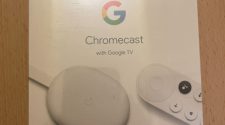Recently, I worked with a research
assistant to assess the efficacy of the use of smart phones and tablets in
lectures.
The study involved asking students to use
their own devices to access an app. On the app, students could post ‘chat’
questions. The questions they posted would appear simultaneously on the lecture
slides at the front of the room. The students could also draw on the lecture
slides on their devices to circle correct answers or vote on questions posed on
the slides. Their drawings would similarly appear on the screen at the front of
the lecture hall.
After using their devices and the app in my
lectures over a 12-week semester, the students were interviewed to get their
thoughts on the project.
The study found some very interesting
results – many of which highlighted some of the shortcomings of our project. Too
often, educators share tips in a way that exclusively highlight their great
successes. But tips on what to avoid are just as valuable.
So, in this post I would like to share with you 5 tips for using smart phones in your own lectures that will help you learn from both the successes and failures of my own project.
1. Have a pedagogical justification for the use of your technology
Educational technology usage is highly encouraged in most higher education institutions. This is because technology has been found to have had significant benefits for cognitive development (Jones, 2019) when used appropriately.
However, often, technology is used in a
tokenistic manner.
Sometimes, this tokenism is bred by
performance standards that force educators
to use technology in situations in which it is not needed.
So, I recommend having a pedagogical
justification for why you used the technology. Explicitly state how it might
help progress student learning.
Here’s the justification we developed at the beginning of the project: “Our study’s goal is to use technology to create a social and interactive learning environment in a lecture hall. By promoting two-way interaction between students and the educator, our lectures can be more responsive to the needs of our students.”
2. Ensure your Students Support your Technological Implementation
Interestingly, students often prefer not to use technology in lectures (Covill, 2011). Many of my students felt that a lecture should be a transmission-style learning experience, and they looked forward to this opportunity to listen to an expert. As one student stated: “In the lectures I want to get knowledge. It’s information for my assignments that I want. In the seminars we can then talk about it, but in the lectures I want to just be told what I need to know.”
This was a moment that reminded me of the
huge importance of listening to and communicating with my students. I hadn’t involved
my students in the decision-making processes in classrooms, and they seemed to be
challenging my goal of creating a two-way discussion stream.
I had not sufficiently convinced my
students of the benefits of using technologies in the lectures.
Therefore, next time I use mobile phones in lectures, I plan on working with my students on coming up with ways to use technologies that the students embrace and see the benefits in. A discussion at the beginning of the semester, which involves bringing the students on as stakeholders and inviting them to provide suggestions of apps to use, will be my first step for next time I implement new technologies in my lectures.
3. Remember that Battery Life is Finite
We didn’t plan for the regularity with
which students had troubles due to battery failure.
In fact, I was often unaware that battery
failure was the underlying cause for many students’ lack of access.
I was frustrated throughout the semester
about why few students chose to use the apps we provided for their stated
purpose.
Yet, when the project concluded, and I
interviewed my students, battery life failure was a very regularly cited issue
they faced.
A few of my students highlighted that it
was actually the app I provided that led to the battery failure. It sucked up
their batteries very quickly.
I would therefore recommend that you try out a range of apps, test their affordances, and explore how much they drain students’ batteries before settling on one to use.
4. Allow Space for Anonymous Input
Many of my students complained that
whenever they posted a question on the ‘chat’ thread, their names would appear
on the screen at the front of the lecture.
It appeared that in a class of over 90
students, shyness and intimidation was widespread. Students didn’t want to be
revealed as being wrong, ignorant, or embarrassed by their comments.
As one student noted: “When people answer, the name comes up [on the lecture screen], and they don’t want to be wrong. I feel like some people don’t want their name put up there.”
This response was probably the most common
response we got in our post-project interviews!
The lesson here is clear: make sure students feel safe and comfortable asking questions. One of the top ways of doing this is to allow them space to contribute anonymously.
5. Be Aware that your Students aren’t all Tech Savvy!
We often wrongly assume that our students are digital natives, capable of adapting to technology at the drop of a hat (Kirschner & De Bruyckere, 2017). However, given the diversity of students in contemporary higher education institutions, educators needed to train their students regularly on how to work with the apps we introduce in our classes.
Surveys of the class revealed that all of
my students had internet-connected smart phones in the lectures. Nonetheless,
there were regular issues getting connected to the app I provided. The first
ten minutes of the class often involved students putting up their hands asking
technology-related questions about how to connect to the app.
While I reinforced how to use the app at
the start of the first few lessons, the weekly interval between classes meant
right through to the very last week, students continued to forget how to use
the app.
Furthermore, some of the students noted that they prefer to take notes on paper rather than using an app. These students were not necessarily unable to use the technology, but nonetheless had alternative preferences. The lesson here is one that technology use and preferences vary significantly across a student cohort. Educators need to reflect on how they can use technology in an inclusive, educative way that shows students how it can benefit their learning and provides ease of use for all students no matter their technological capabilities.
Concluding Thoughts
I continue to promote smart phone usage in lectures. The lessons I learned from this initial study have made me a more effective and student-centered educator (Weimer, 2019). Learning from our mistakes is sometimes the most effective way to improve!
By listening to your students and involving them in the planning and implementation of a technological intervention, students’ technology acceptance will improve. This, surely, will help make our original goal of creating more social and interactive lectures a reality.
Christopher Drew, PhD, completed his study of handheld technologies in lectures while a senior lecturer at Teesside University in the UK. The project’s results have also been published in an academic journal article, which you can access here. The project passed university ethical approval.
References
Covill, A. E. (2011). College students’
perceptions of the traditional lecture method. College Student Journal, 45(1), 92–102.
Jones, S. (2019). 5+ Examples of Cognitive Tools for the Ed-Tech Teacher. Helpful Professor. Retrieved from: https://helpfulprofessor.com/cognitive-tools/
Kirschner, P. A., & De Bruyckere, P. (2017). The myths of the digital native and the multitasker. Teaching and Teacher Education, 67(1), 135-142. Doi: https://doi.org/10.1016/j.tate.2017.06.001
Weimer, M. (2019). Learner-Centered Teaching: 10 Ideas for Getting Started. https://www.facultyfocus.com/articles/effective-teaching-strategies/learner-centered-teaching-10-ideas-for-getting-started/















